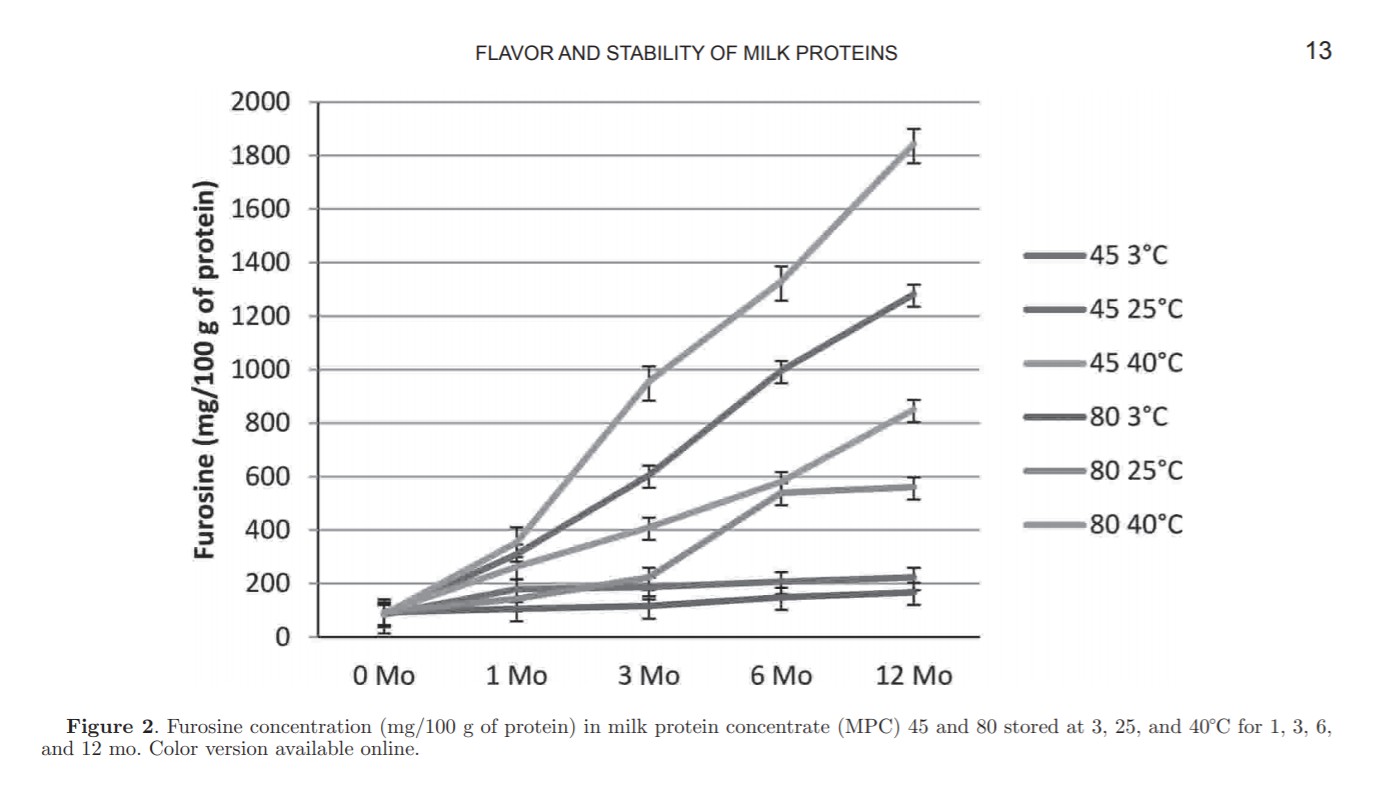Flavor and stability of milk proteins
T J Smith J Dairy Sci. 2016 Jun;99(6):4325-4346
A greater understanding of the nature and source of dried milk protein ingredient flavor(s) is required to characterize flavor stability and identify the sources of flavors. The objective of this study was to characterize the flavor and flavor chemistry of milk protein concentrates (MPC 70, 80, 85), isolates (MPI), acid and rennet caseins, and micellar casein concentrate (MCC) and to determine the effect of storage on flavor and functionality of milk protein concentrates using instrumental and sensory techniques. Spray-dried milk protein ingredients (MPC, MPI, caseins, MCC) were collected in duplicate from 5 commercial suppliers or manufactured at North Carolina State University. Powders were rehydrated and evaluated in duplicate by descriptive sensory analysis. Volatile compounds were extracted by solid phase microextraction followed by gas chromatography-mass spectrometry (GC-MS) and gas chromatography-olfactometry. Compounds were identified by comparison of retention indices, odor properties, and mass spectra against reference standards. A subset of samples was selected for further analysis using direct solvent extraction with solvent-assisted flavor extraction, and aroma extract dilution analysis. External standard curves were created to quantify select volatile compounds. Pilot plant manufactured MPC were stored at 3, 25, and 40°C (44% relative humidity). Solubility, furosine, sensory properties, and volatile compound analyses were performed at 0, 1, 3, 6, and 12 mo. Milk proteins and caseins were diverse in flavor and exhibited sweet aromatic and cooked/milky flavors as well as cardboard, brothy, tortilla, soapy, and fatty flavors. Key aroma active compounds in milk proteins and caseins were 2-aminoacetophenone, nonanal, 1-octen-3-one, dimethyl trisulfide, 2-acetyl-1-pyrroline, heptanal, methional, 1-hexen-3-one, hexanal, dimethyl disulfide, butanoic acid, and acetic acid. Stored milk proteins developed animal and burnt sugar flavors over time.
Solubility of MPC decreased and furosine concentration increased with storage time and temperature. Solubility of MPC 80 was reduced more than that of MPC 45, but time and temperature adversely affected solubility of both proteins, with storage temperature having the greatest effect. Flavor and shelf stability of milk proteins provide a foundation of knowledge to improve the flavor and shelf-life of milk proteins.














